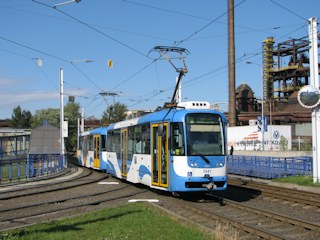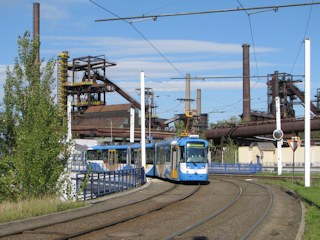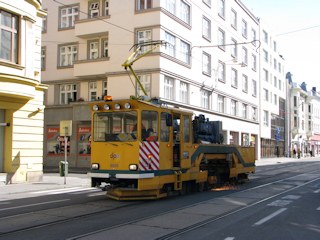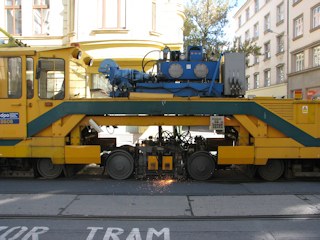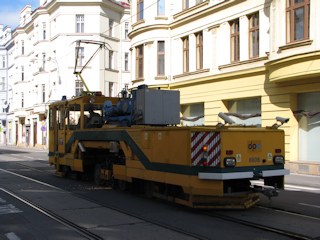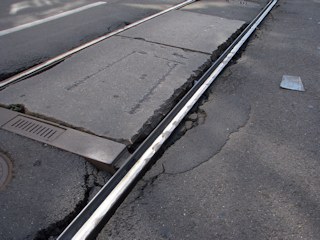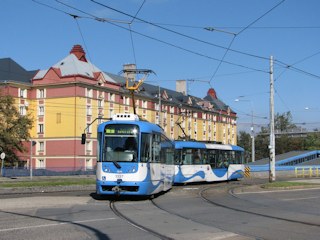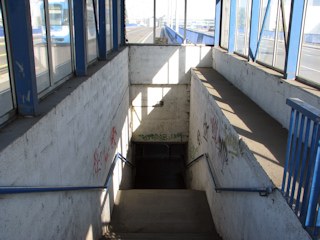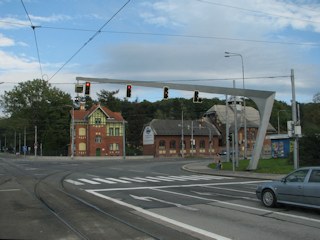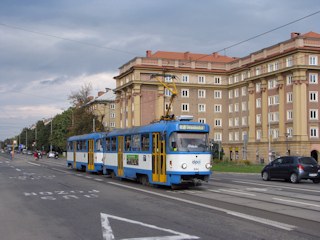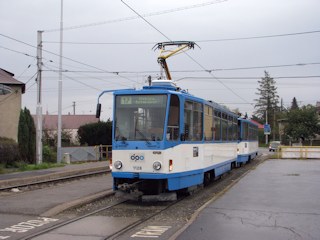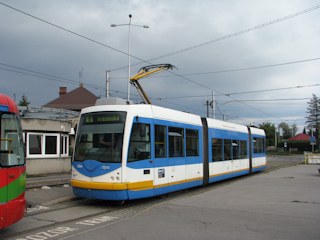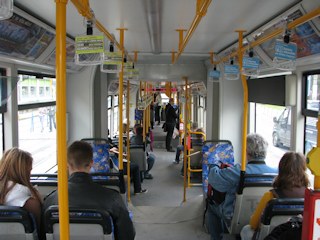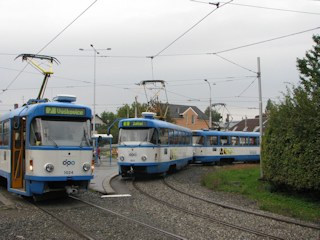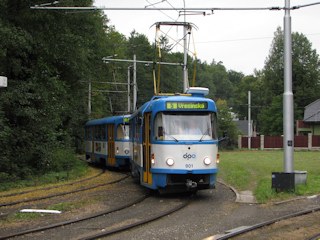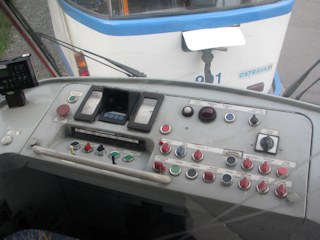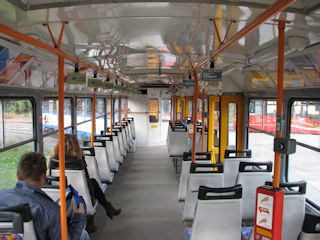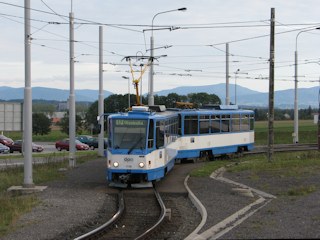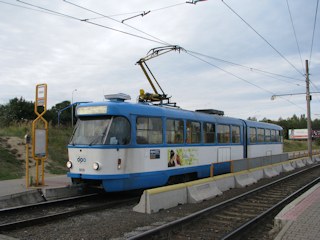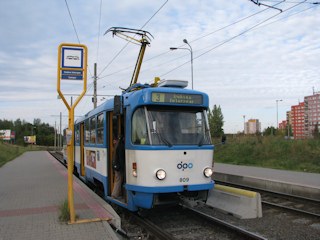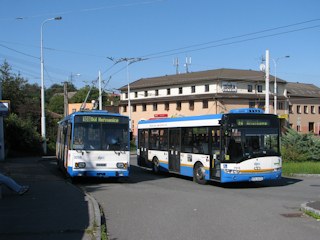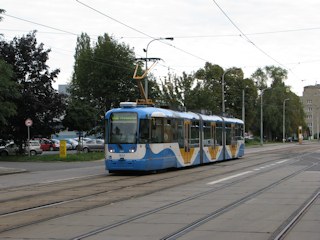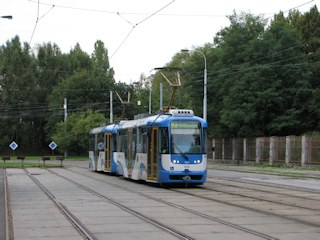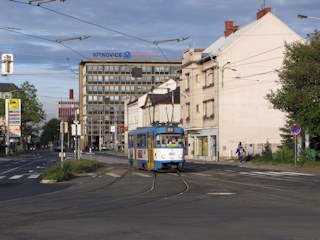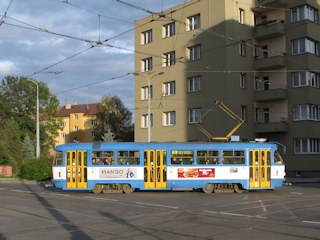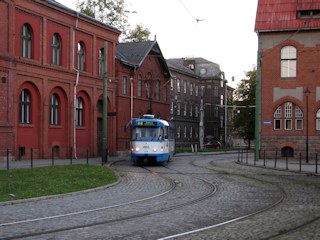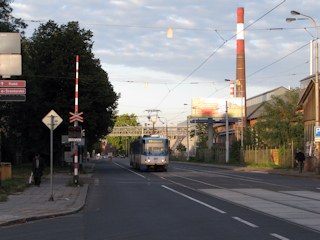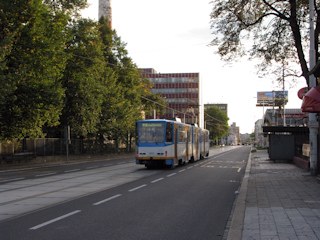Trams of Hungary and much more...
Hier geht's zur deutschsprachigen Version / Kattints ide a magyar változathoz
Ostrava was not on my shortlist of tram cities to visit, but when we decided with a few friends to go to the "NATO Days 2012" air show taking place nearby, it seemed a good idea to add another day to the trip, and look around tram-wise, too.
It was sunny when we arrived, and because we did not know the weather would soon change drastically, we did not do a properly planned photo walk, just travelled around, taking whatever tram came, and taking photos wherever we stopped. Like at Náměstí Republiky. To the left we see a Tatra T3R.P that started its life in 1987 as a T3SUCS. To the right another classic Tatra: a K2G artic that was built in 1969 as a K2.
The turnout at Vítkovice Vys.Pece, with some industrial scenery in the back, so typical for this city. To the left we see a two-car VarioLFR.E unit - these are newly built vehicles with a drop-centre section, based on classic Tatra technology. To the right: the VarioLF3/2 is an articulated version in a similar manner: it's a three-section bidirectional articulated tram. The Ostrava public transit company DPO also has this type in unidirectional and two-section variety, but we haven't seen any of those.
Traffic through the inner city was disrupted because of track maintenance: this locally-built beast was grinding the rails in Nádražní.
It didn't just polish the top, but grinded away humps on the rails for good.
Two minutes of Ostrava tram life on video.
Back to Náměstí Republiky: to the left a Škoda 03T2 "Astra", to the right a VarioLFR.E double-set.
The stop here was built in the style how the People's Republic of Czechoslovakia imagined modern transportation: private right-of-way, glassed shelters, but also lots of concrete walls, bars and stairs.
The sunshine was gone, so we hopped onto something, and travelled towards north. Underway I took these photos: to the left an interesting traffic lights post at Nová Ves Vodárna, to the right: a bit of single-track running near Ostrava-Svinov due to bridge renovation.
To the left: T3R.P in Poruba, to the right: T6A5 double-set at Vřesinská.
To the left: the Inekon "Trio" 2003 is basically the same as the Škoda 03T. These two companies have designed the vehicle together, but after a while they parted ways. To the right: I'm not sure if this photo shows a 03T or a "Trio", but the layout of the vehicle is the same anyway.
To the left: T3R.P and T3SU double-sets at Vřesinská. To the right: the outer terminus of tram line 5 in Zátiší.
This tram line 5 is basically a vicinal railway, built and operated between 1927 and 48 as a proper sideline with steam locomotives and freight traffic. It still felt like such, when the departure from Vřesinská was signalled by the personnel with a whistle :)
The dashboard and the interior of a T3SU, a T3 submodel still sporting a PCC accelerator.
It was raining cats and dogs during the whole late afternoon, so instead of taking photos I just took videos. Very Hamster-ish videos :)
To the left: a 03T in Plzeňská in the morning. To the right: T6A5 double-set at Dubina Interspar in the afternoon. The air show mentioned in the introduction took place between these two photos.
I must admit I like the K2 better than the T3.
There are also trolley buses in Ostrava, but I managed to avoid them. Except for here (Koblov), because we were staying in the hotel in the background of the first photo :) To the left: a Škoda 14Tr10/6 (with a Solaris Urbino 10 III), to the right a Škoda 21Tr.
The reserve tracks in Palkovského are probably there to store extra trams during events in the nearby stadium/event hall.
Another video: running along the forge, the rail grinder, and a few other scenes.
To the left: there's a building at the corner of Palkovského/Ruská that trams are running through. To the right: the KT8D5 articulated trams were retrofitted with a low-floor section and converted to unidirectional operation. Now they're called a KT8D5R.N1.
T3SUCS at the corner of Palkovského/Ruská.
To the left: Mírové náměstí, the centre of the Vítkovice industrial quarter. To the left: ulice 1. máje, just about 300 meters away. Quite a change in the surroundings!
Brick-walled 19th-century buildings and old forges, where the tram has to bounce over several industrial sidings, and all this just a few hundred meters away from each other.
And I say farewell to Ostrava with these two photos of a KT8D5R.N1. It was a good idea to stay a bit longer :)


